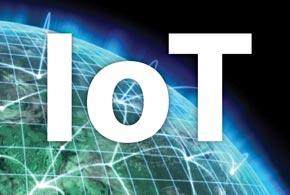The Internet of things (IoT) is rapidly moving from an intriguing concept to a regular part of our lives. Over the last few years, fitness bands, thermostats and farm equipment have all gotten connected.
Over the next few years, all sorts of objects—clothing, kitchen appliances and industrial equipment—will almost certainly join the list. Cisco Systems predicts that 99 percent of physical objects will eventually be part of the IoT.
Amid the hubbub, there’s an aspect of the IoT that’s often overlooked. Every device requires an RFID tag, microchip and/or other electronic components. Individually, there’s nothing remarkable about that. But collectively, there’s growing concern about the environmental impact. Not only will all these systems require more electricity, there’s also the question of what to do with the waste.
Already, electronics is a serious environmental concern. According to the EPA, more than 225 million electronic devices are discarded annually in the United States, and only about 8 percent of mobile devices and 38 percent of computers are recycled.
Standards such as Energy Star and RoHS (Restriction of Hazardous Substances) offer basic guidance into energy efficiency and toxic materials, respectively. But these guidelines provide only a limited view of the situation.
Greenpeace is attempting to draw attention to the issue through its Cool IT Challenge. Among other things, it evaluates and rates companies based on how much research and effort they expend in the production of products.
Meanwhile, initiatives such as the Open Compute Project (OCP), strive to seed best practices in data center design by encouraging companies to share information. It claims to have saved enterprises more than $1 billion, and much of it relates to energy costs and more efficient design.
But neither of these initiatives—nor growing pressure from consumers, especially younger members of society who are more eco-oriented—address the fundamental problem: Many of today’s devices are designed to become obsolete within a short period of time, often a couple of years or less.
That brings us back to the Internet of things. The verdict is out on what shape the IoT will eventually take. But it’s perfectly clear that it will fundamentally change business and our daily lives. For better or worse, connected lipstick dispensers, door locks and clothes are likely to become the new normal.
If all of our old and disposable devices—along with the gazillions of batteries we use to power them—end up in landfills, we’re headed for a colossal and connected waste problem.










